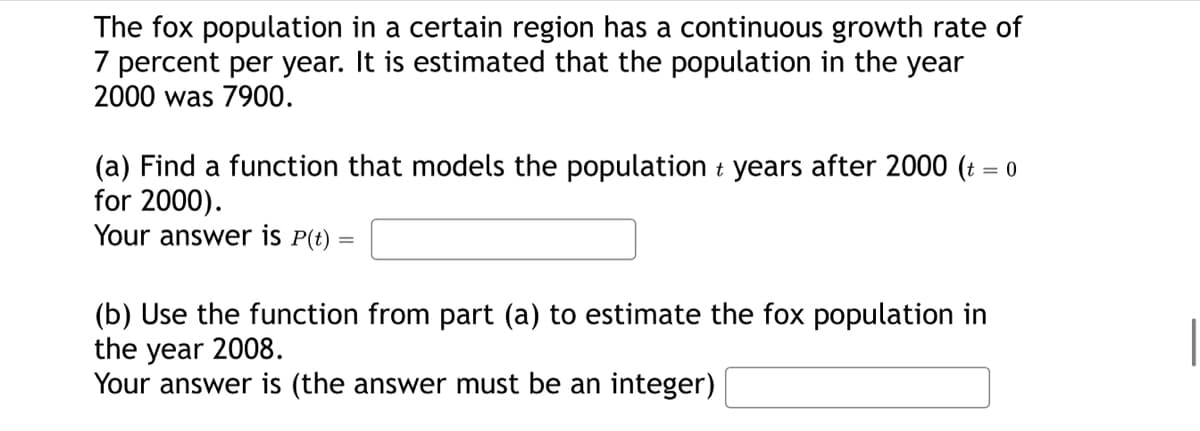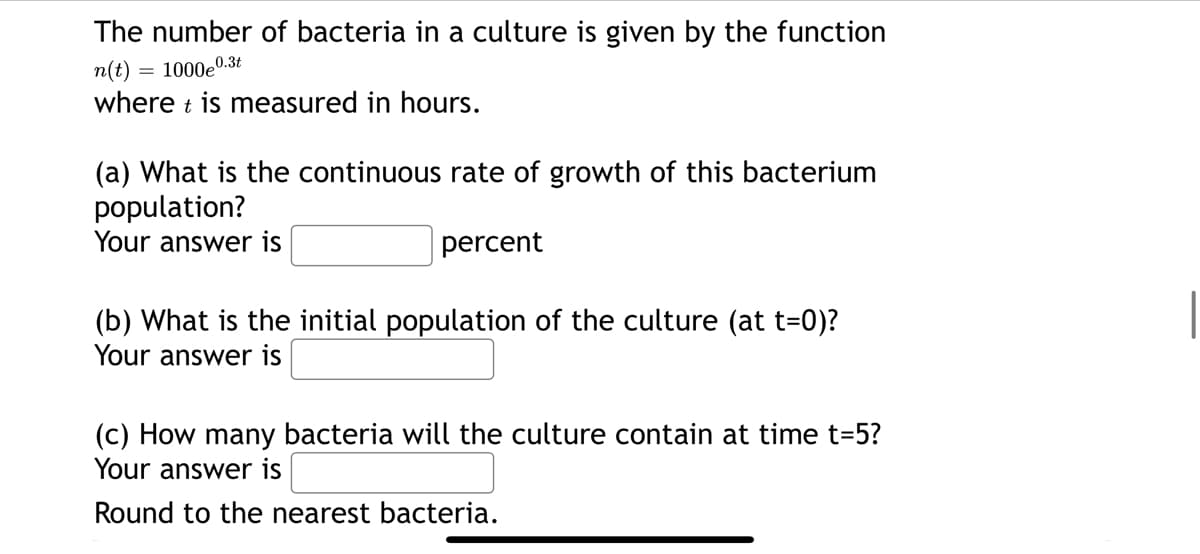The fox population in a certain region has a continuous growth rate of 7 percent per year. It is estimated that the population in the year 2000 was 7900. (a) Find a function that models the population + years after 2000 (t = 0 for 2000). Your answer is P(t) = (b) Use the function from part (a) to estimate the fox population in the year 2008. Your answer is (the answer must be an integer)
The fox population in a certain region has a continuous growth rate of 7 percent per year. It is estimated that the population in the year 2000 was 7900. (a) Find a function that models the population + years after 2000 (t = 0 for 2000). Your answer is P(t) = (b) Use the function from part (a) to estimate the fox population in the year 2008. Your answer is (the answer must be an integer)
Linear Algebra: A Modern Introduction
4th Edition
ISBN:9781285463247
Author:David Poole
Publisher:David Poole
Chapter6: Vector Spaces
Section6.7: Applications
Problem 13EQ
Related questions
Question

Transcribed Image Text:The fox population in a certain region has a continuous growth rate of
7 percent per year. It is estimated that the population in the year
2000 was 7900.
(a) Find a function that models the population + years after 2000 (t = 0
for 2000).
Your answer is P(t) =
(b) Use the function from part (a) to estimate the fox population in
the year 2008.
Your answer is (the answer must be an integer)

Transcribed Image Text:The number of bacteria in a culture is given by the function
n(t) = 1000e0..
0.3t
where t is measured in hours.
(a) What is the continuous rate of growth of this bacterium
population?
Your answer is
percent
(b) What is the initial population of the culture (at t=0)?
Your answer is
(c) How many bacteria will the culture contain at time t=5?
Your answer is
Round to the nearest bacteria.
Expert Solution
This question has been solved!
Explore an expertly crafted, step-by-step solution for a thorough understanding of key concepts.
Step by step
Solved in 2 steps

Recommended textbooks for you

Linear Algebra: A Modern Introduction
Algebra
ISBN:
9781285463247
Author:
David Poole
Publisher:
Cengage Learning

Algebra & Trigonometry with Analytic Geometry
Algebra
ISBN:
9781133382119
Author:
Swokowski
Publisher:
Cengage


Linear Algebra: A Modern Introduction
Algebra
ISBN:
9781285463247
Author:
David Poole
Publisher:
Cengage Learning

Algebra & Trigonometry with Analytic Geometry
Algebra
ISBN:
9781133382119
Author:
Swokowski
Publisher:
Cengage
